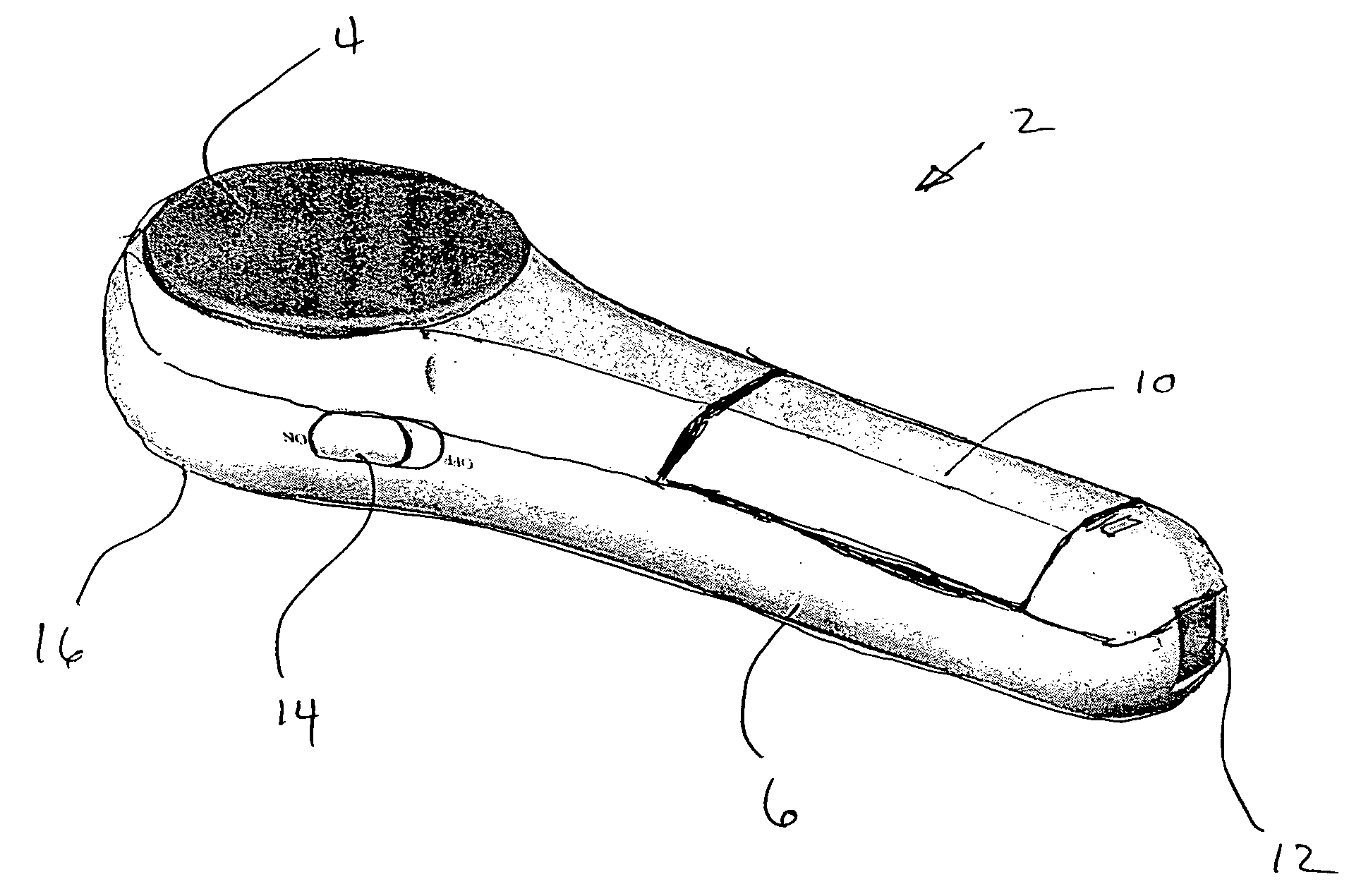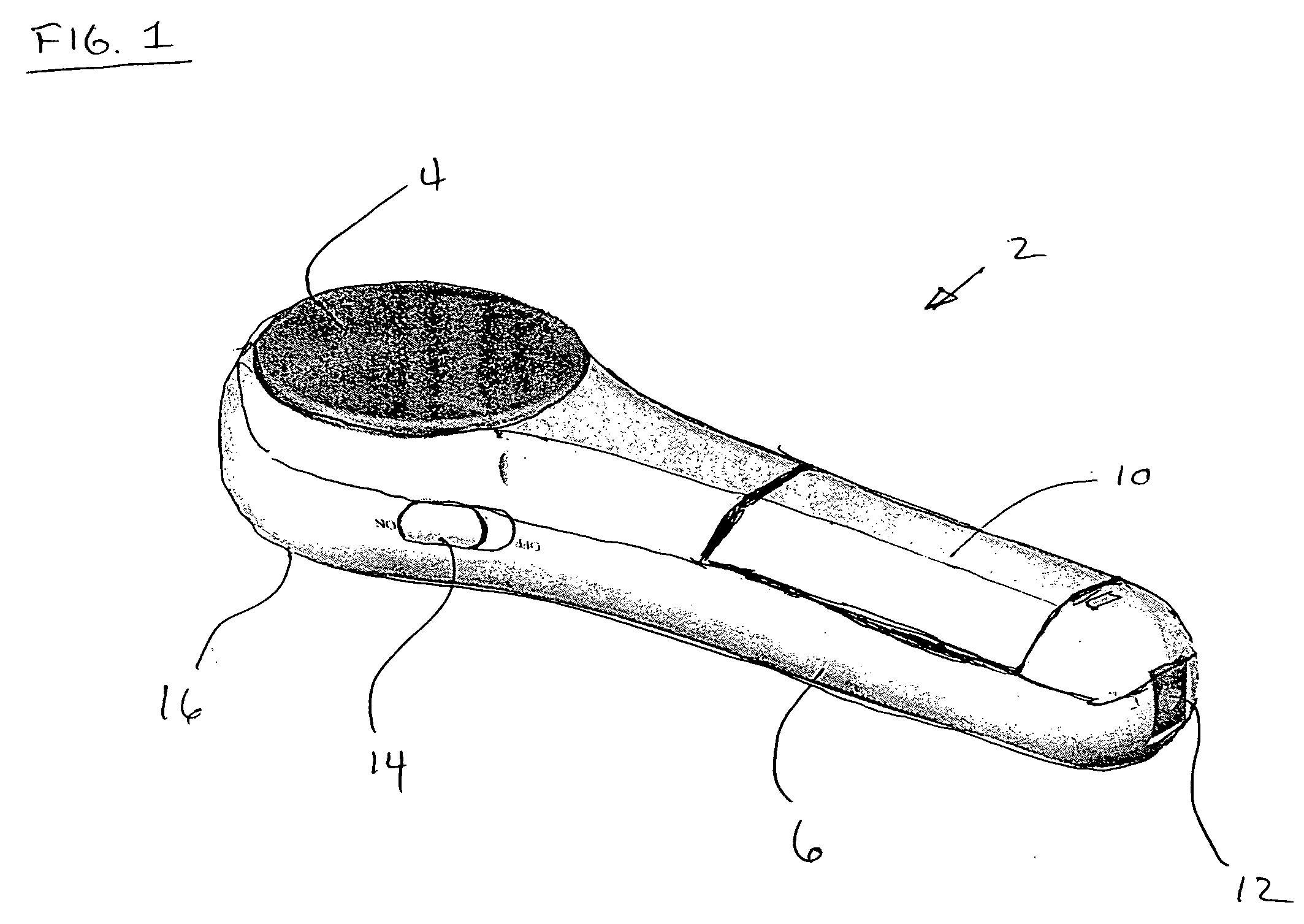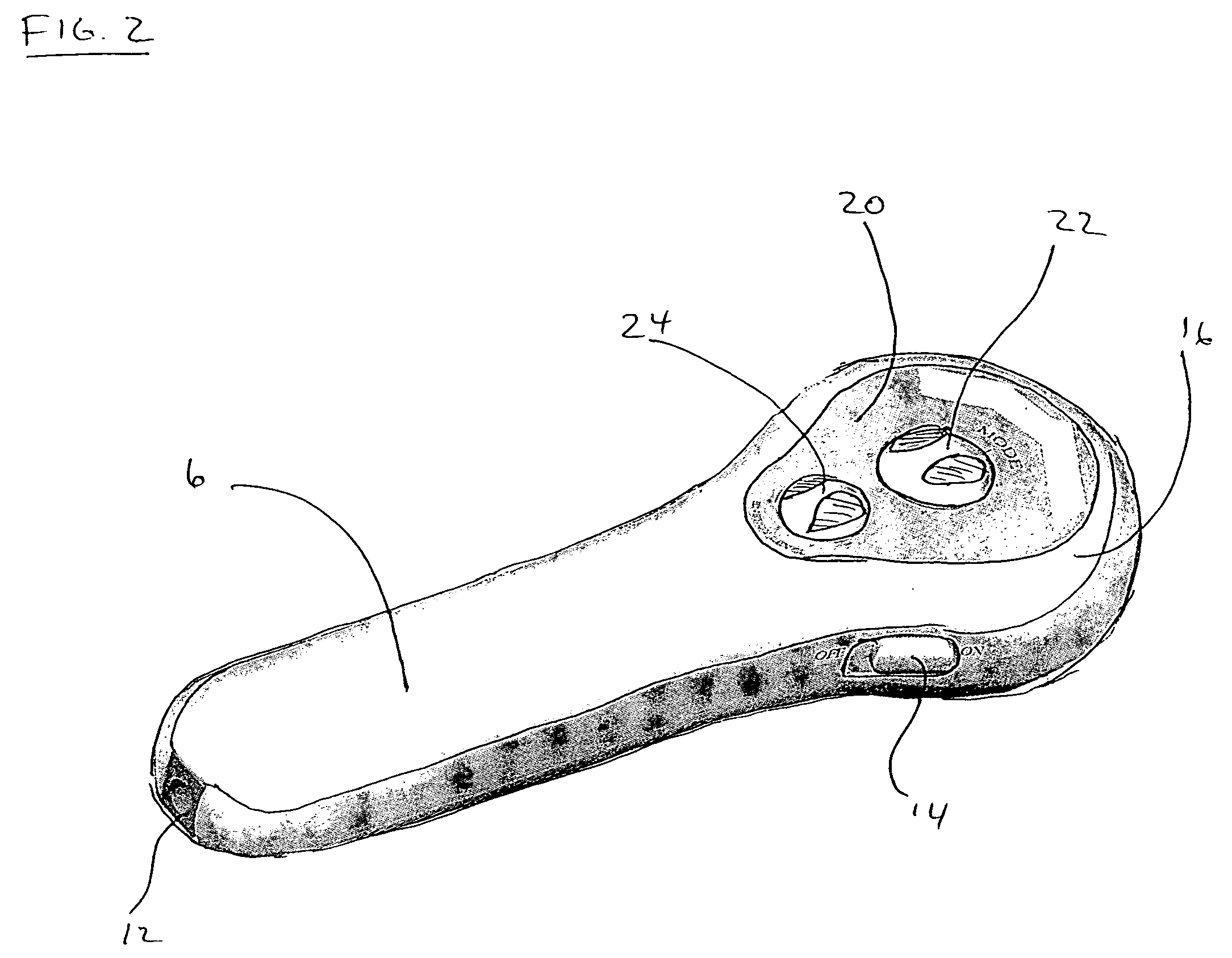Light wand for healing tissue
a light wand and tissue technology, applied in the field of medical devices, can solve the problems of not widely accepted as suitable for medical use, lasers are very expensive devices, and require a large amount of power,
- Summary
- Abstract
- Description
- Claims
- Application Information
AI Technical Summary
Benefits of technology
Problems solved by technology
Method used
Image
Examples
Embodiment Construction
[0021] The light wand of the present invention can be any shape or size. Preferably, the wand is small enough to be carried. For example, the wand can be, but is not limited to the following dimensions: approximately 2½ inches×7 inches×1 inch. The light wand is shaped for ease of use. Light emitting diodes (LEDs) are used to emit light energy for the promotion of tissue healing and other beneficial results. The light energy from LEDs can assist with various skin conditions, for example, acne, rosacea, and eczema and reduce inflammation in swollen gums associated with baby teething.
[0022] Monochromatic light from LEDs is focused light energy that isolates on the most potent frequencies for the relief of acute or chronic pain and wound healing. Cell tissue responds best to certain frequencies that appear to be with the infrared spectrum, such as 660 nanometers (nm), 660 nm, 880 nm, 940 nm and 950 nm. The water and blood content within the body tissue restrict full absorption of light...
PUM
 Login to View More
Login to View More Abstract
Description
Claims
Application Information
 Login to View More
Login to View More - R&D
- Intellectual Property
- Life Sciences
- Materials
- Tech Scout
- Unparalleled Data Quality
- Higher Quality Content
- 60% Fewer Hallucinations
Browse by: Latest US Patents, China's latest patents, Technical Efficacy Thesaurus, Application Domain, Technology Topic, Popular Technical Reports.
© 2025 PatSnap. All rights reserved.Legal|Privacy policy|Modern Slavery Act Transparency Statement|Sitemap|About US| Contact US: help@patsnap.com



